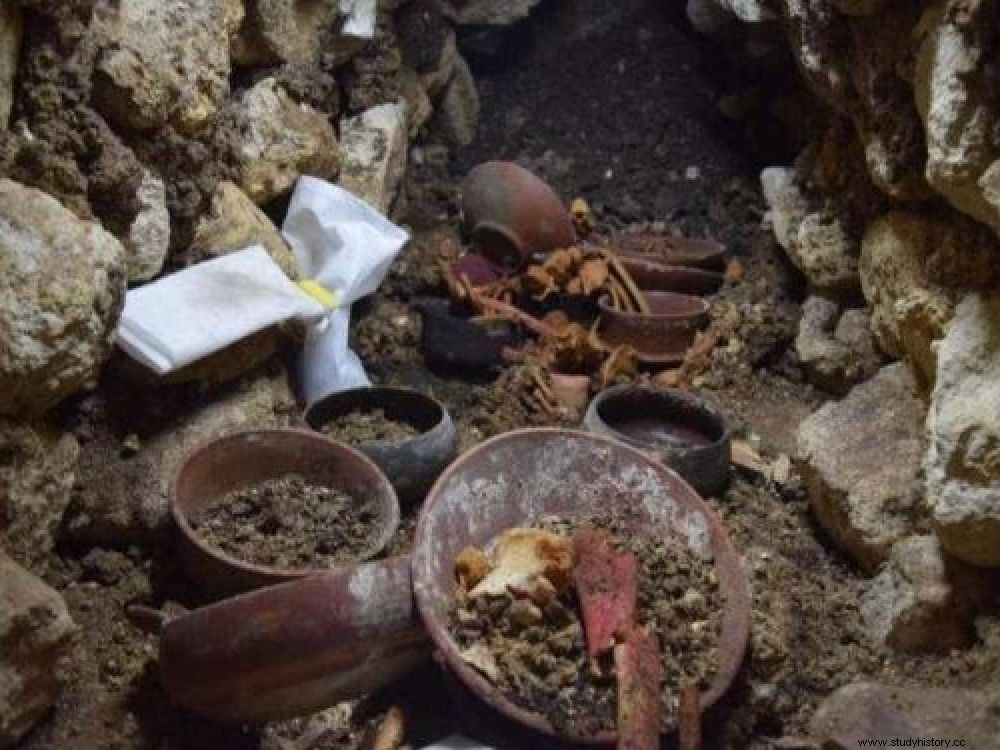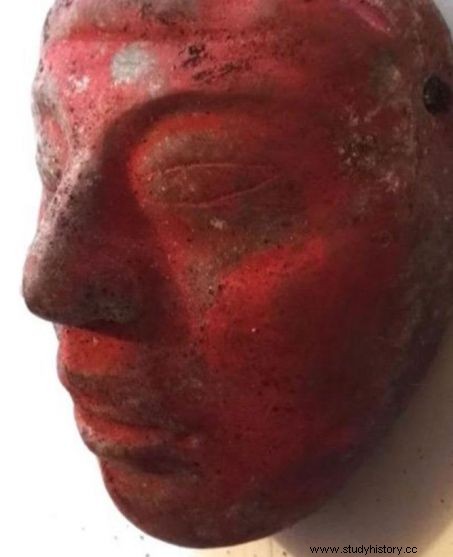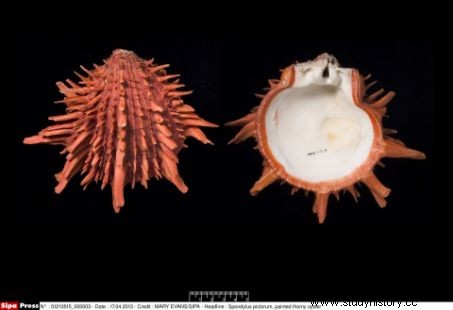Archaeologists have discovered the tomb of one of the oldest Mayan rulers in Péten, in northern Guatemala.

Offerings surrounding the remains of a Maya ruler recently discovered at the site of El Peru-Waka, Guatemala.
About twenty ceramic vases, spondylus , sacred shells from the waters of the Pacific, jade ornaments, sculpted pendants… These are the delicate offerings that archaeologists have just discovered at the site of El Peru, also known as Waka, in the Laguna del Tigre, 78km from Tikal, Guatemala. There, in the thick jungles of Péten, the untouched tomb of a monarch has been unearthed by Guatemalan archaeologists from the "Proyecto Arqueológico El Perú-Waka ". The Mayan ruler's burial has been tentatively dated by ceramic analysis to AD 300-350, making it the oldest known royal sepulcher in this part of Guatemala. Anthropologists Juan Carlos Pérez Calderon, from San Carlos University (Guatemala), Damien Marken, from Bloomsburg University in Pennsylvania, and David Friedel, professor of anthropology at Washington University in St. Louis, co-directors of the project, announced the findings at a recent symposium sponsored by Guatemala's Ministry of Culture.
According to the online journal Phys. Org* which relays the information, it would be the last resting place of one of the first sovereigns of the royal Maya Wak dynasty which appeared around the 2nd century AD. It was by exploring a tunnel located under the one of the ceremonial buildings of the city, which specialists came across this burial. Its princely identification could be made thanks to the presence of a very beautiful jade mask covered with red cinnabar powder, -natural sulphide of mercury-, symbol of blood, vital substance, bearer of a royal emblem dedicated to the god maize, one of the main deities of the Mayan pantheon.

The jade mask covered with cinnabar powder unearthed in the burial. © Proyecto Arqueologico Waka. Ministry of Culture and Sports of Guatemala.
"Possibly King Te 'Chan Ahk, a Wak King historically known who ruled at the beginning of the fourth century AD “, explained the experts. The precious mask would have slipped from the face of the sovereign, which it was originally supposed to cover. Other identical green stone masks have already been collected from the prestigious nearby site of Tikal in the 1960s.

Two species of spondylus from the Pacific Ocean (Spondylus princeps and S. calcifer) had significant ceremonial and ritual significance in many prehistoric cultures of South, Central, and North America. © Mary Evans/Sipa
El Peru-Waka was occupied from 500 BC. AD, 800 AD. JC. It owes its prosperity to its strategic location north of the Río San Pedro Martir from where it controlled trade routes. Close to the powerful Mayan capitals of Calakmul and Tikal, it was discovered by oil prospectors in the 1960s. A series of excavation campaigns have been carried out there since 2003, with the exhumation of several tombs of dignitaries.
*Tomb of Early Classic Maya Ruler found in Guatemala, Phys. Org, September 14, 2017
